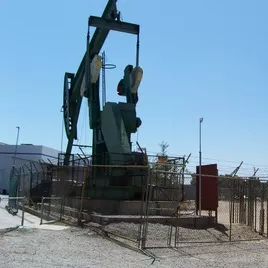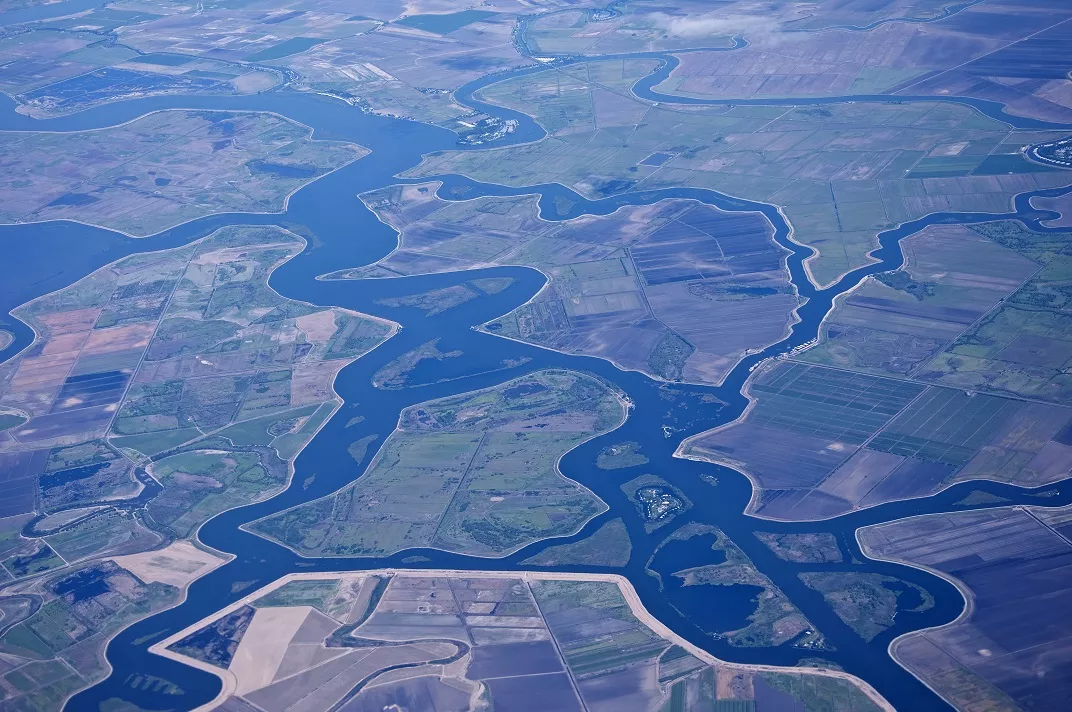
CalPERS Votes Against ExxonMobil’s Anti-Climate Board Members
Take Action to Protect White Sturgeon from Extinction!
Delta Tunnel Analysis Released; What Does a Breath of Fresh Air Cost?
CalPERS Votes Against ExxonMobil’s Anti-Climate Board Members

On May 20th, the California Public Employees’ Retirement System (CalPERS) stood up to ExxonMobil and promised to vote against the corporation’s executive slate in its annual shareholder meeting. This came after a coalition of community, labor, and environmental organizations including Sierra Club and led by California Common Good, called on CalPERS to reject Exxon for its unprecedented lawsuit against its own shareholders, who attempted to pursue climate action.
As the largest pension fund in the United States and a $1.1 billion dollar investor in the corporation, CalPERS’ leadership against Exxon helped support requests from seven state Treasurers, including California’s Fiona Ma, for shareholders and investment firms to stand against Exxon’s executives.
On May 29th, Exxon’s entire executive team was handily elected, with initial results showing executives receiving between 87 percent and 98 percent of their respective votes. While high, these margins are devastating for Exxon. It is likely that Executive Chair and CEO Darren Woods and Lead Independent Director and Nominating and Governance Committee Chair Joseph Hooley received only 87 percent support — only nine S&P 500 energy company directors received less support in 2023. It is rare for uncontested S&P 500 executives to receive anything less than unanimous support and these are the lowest margins of support for an Exxon executive since 2020, according to Majority Action.
This small victory is a rebuke against Exxon’s anti-climate change stance. Exxon is now on the defensive, and CalPERS has committed to taking further actions against the corporation. Some of these could include a refusal to purchase bonds from Exxon or even a commitment to preparing to divest from the corporation.
As this conflict has unfolded, SB 252, has continued to move through the California legislature. The bill would require CalPERS and CalSTRS to divest their holdings in fossil fuel corporations and prohibit them from making further fossil fuel investments. Labor, community, and environmental organizations like Sierra Club are already requesting that CalPERS reject future purchases of bonds from Exxon.
Sierra Club California and our allies are committed to holding Exxon and other polluters accountable for their anti-environmental policies. Keep an eye on your inbox for future opportunities to support these efforts.
Take Action to Protect White Sturgeon from Extinction!

Credit: Natasha Donovan
This month, the California Fish and Game Commission (Commission) will hear a petition to list the White Sturgeon as a threatened species under the California Endangered Species Act (CESA).
Like other fish native to the San Francisco Bay Delta, the White Sturgeon has suffered precipitous population declines in recent years. Existing laws and regulations have failed to protect in-stream flows, temperature, habitat, and water quality. These issues have created disastrous conditions in the Bay Delta ecosystem and for native species.
Sierra Club California has advocated for years to increase protections for the Bay Delta by updating the Bay Delta Water Quality Control Plan and investing in alternative water supplies to help reduce reliance on fresh water exports. A recent review of water rights in the Bay Delta watershed by the State Water Board found that there are water right permits to divert at least five times more water from the Bay Delta than the average amount of water that actually flows out through the Bay Delta estuary.
This unsustainable pressure to divert freshwater flows has come at a price to the Bay Delta ecosystem, survival of native species, and local communities. Multiple native fish, including green sturgeon, Delta smelt, longfin smelt, steelhead, winter-run and spring-run chinook salmon are listed under the federal and/or state endangered species laws.
Rather than investing in sustainable alternatives to improve the condition of the Bay Delta, protect ecosystems, and reduce the state’s reliance on exported water, the Newsom administration has doubled down on harmful proposals that rely on increasing diversions from the Bay Delta and reducing in-stream flow and water quality protections.
Without additional protections provided under CESA, White Sturgeon will face increasing challenges to survival over the next few years. White sturgeon survival and reproduction depends on appropriate temperature conditions, high river flows, and Delta outflow in the spring and early summer. Increasing pressure on in-stream flows from new water diversions, like the Delta Tunnel and Sites Reservoir, combined with inadequate water quality protections being proposed by the administration in the Voluntary Agreements, will make an intolerable situation even worse.
On June 19th, the Fish and Game Commission will decide whether to accept the petition to list White Sturgeon as threatened for further review. If the petition is accepted, Sturgeon will be temporarily protected as a Candidate Species under CESA while the Department of Fish and Wildlife does additional scientific review and evaluation. This month’s decision is an essential step to fully protecting the White Sturgeon by law, and will provide immediate legal protections to prevent further species decline.
Delta Tunnel Analysis Released; What Does a Breath of Fresh Air Cost?

The California Department of Water Resources (DWR) just released their benefit-cost analysis (BCA) for the Delta Conveyance Project (DCP), also known as the Delta Tunnel. DWR estimates that the tunnel will cost $20.1 billion in 2023 dollars. Sierra Club California is working with a renowned economist, Dr. Jeffrey Michael, to analyze the BCA and produce a report of the findings from the consultant which we will share with the public as soon as it’s available.
The BCA benefit-cost ratio is inflated by assuming extremely high demand growth, ultra-low interest rates, ignoring environmental costs, and other issues. In addition, the BCA doesn’t consider any alternatives, so a benefit-cost ratio of 2.2, even if correct, does not mean the tunnel is the best alternative.
Sierra Club CA has long advocated that the best alternative is improvements to levees in the Delta, coupled with increased conservation and efficiency. If evaluated with similar assumptions, alternative investments would have very high BCA ratios, too. The BCA assumes that water supply benefits are at least 50% above the higher range of valuations and applies extremely low discount rates of -2%, while ignoring the biggest sources of environmental costs, risks, and project risks in its sensitivity analysis.
Quantifying Environmental Impacts
DWR says “the benefits outweigh the costs and every dollar spent generates $2.20 in benefits,” and in the same document states that beyond the $960 million in environmental mitigation costs, “some environmental impacts are expected to be significant and unavoidable. Where possible, the cost of those impacts has been considered and included. This results in a cost of about $153 million for lost agricultural land, air quality, noise, and transportation impacts.” DWR estimates the duration of construction would be 15 years, and the DCP could be operable for 100 years.
The BCA ignores the environmental impacts from both construction and operation in the tunnel’s Environmental Impact Report (EIR) in cases where the EIR found the impact to be less than significant after mitigation, which is already disputable. It is infeasible to monetize every environmental impact, but there will be high-value, and thus high-cost, impacts to endangered fish species, which are certainly not equal to zero impact. Threats to endangered salmon alone can cost billions of dollars- just consider the closed salmon fishing season. Experimental fish screens may prove deadly for many of the already endangered fish species. Potential threats to fish and other wildlife could cause delays from the Endangered Species Act, and large-scale habitat restoration and mitigation cannot fully offset the negative impacts of the tunnel. This was rejected in previous iterations of the project exactly for these reasons.
Community Benefits Agreement
In the BCA’s media debrief, DWR consultant Dr. Sunding said that the community benefits agreement fund costs $200 million, “which is larger than the economic impact to the Delta,” but they are not including the benefits of the program in their calculations. The community benefits investments include “high-priority local Delta projects, in addition to local business utilization, job training, and infrastructure leave-behinds.” These proposed economic benefits do not counteract the irreparable environmental, Tribal, or cultural costs of the Tunnel. A deeper look at what that actually means in the DCP’s EIR describes some of the activities as addressing homeless encampments (p. 12) and increasing law enforcement throughout the Delta. The report says that homeless encampments “could require grading and excavation” (p.14) and “could have adverse effects on the visual character and quality of the area.” We cannot imagine how homelessness is anywhere in the scope of DWR’s purview, but their proposed solutions are an affront to environmental justice and do not seem to be an actual benefit to communities. We hope that frontline communities and experts in housing-first and justice-oriented groups would be leading the conversations if this program were to be implemented.
Reduced Demand Projections
The BCA’s urban benefits estimate is based on projections from Metropolitan Water District’s (MWD) Scenario D from their Integrated Resources Plan. Scenario D is what they call their “extreme assumption,” which assumes growing demand due to population and economic growth, and reduced imports due to climate change. As Sierra Club California and our allies pointed out to MWD during their 2024-25 biennial budget discussions, their ten-year projections assume increased demands, but that’s not the trend we have been seeing, and part of why revenue was not as high as projected, given the last two extreme wet years. With record volumes of water in storage, demand has not been as high. Projected water transactions for 2024 currently stand at 1.14 million acre-feet (MAF), and the board has decided to assume 1.34 MAF for this biennial budget, down from 1.54 MAF. Climate change will make the next century unpredictable, but leaning towards the most extreme scenario planning requires more spending by ratepayers, and will take more water than necessary from the environment. Reducing freshwater flows causes harm to the ecosystems of the Bay Delta.
According to Dr. Jeffrey Michael even when exaggerating the potential benefits, the costs exceed the benefits for ag districts. The BCA ratio for ag users is 0.39, even with the exaggerated values included in the BCA, and clearly a terrible investment for ag users at $0.39 per dollar invested. When ag districts realize that the tunnel is a terrible investment for them, and they pull their support, the cost will increase for MWD and the few smaller urban districts. The BCA suggests that urban water supply is 94.4% of water supply benefits and MWD ratepayers could end up paying for well over half of the project considering MWD’s current investment is already 47.2%. Increasing costs will fall to ratepayers, as well as property owners and renters in the district given their recent increase in property taxes to pay for State Water Project expenses.
Seismicity & the Freshwater Pathway
Seismic reliability benefits are not economically compelling for the tunnel. The BCA analysis finds less than $1 billion in benefits, but even this number is likely ten times too high due to a calculation error in the BCA Table 4. The BCA (p. 39) states that in an event like an earthquake, “Without the DCP, under the Middle River Corridor Strategy, the export disruption ranges from six days to 448 days, with an average of 203 days. The Delta recovery time, defined as the time required for the Delta water quality to recover to the level with no breach, ranges from 11 days to 498 days, with an average of 306 days.” We have said for years that regardless of the tunnel, there’s an additional 400 miles of aqueduct south of the Bay Delta that could still be interrupted by seismic activity, regardless of this expensive project. Another option for seismic protections, that does not take unnecessarily high volumes of freshwater flows from the Bay Delta, is the Freshwater Pathway. The Freshwater Pathway is a leveed channel directing water south to Central Valley farmers and SoCal, which has the potential for levee improvements and rock stockpiles that could provide water reliability in the face of seismic activity or extreme weather. This would not only provide water reliability, but protection to Delta communities in the case of flooding. It is a project widely praised by both state water contractors and Delta communities, for significantly reduced costs compared to the DCP.
Construction Costs
Lastly, we’d like to note that the final vote to fund the construction of the tunnel will be in 2026 or 2027, assuming no delays, which are likely given the 38 plaintiffs suing the project. The tunnel assumes a minimum of 15 years of construction, which seems unlikely in an era of climate disaster and exorbitant inflation. While ignoring risk and sensitivity analysis for the project cost, the cost estimate still says that costs could increase by 60%, which would be $12 billion for the tunnel. 90% of mega projects exceed their budget with an average cost of 60% in increases. Restore the Delta noted that with annual inflation costs for construction rising to 10.7% since 2020, or a 2023 California Construction Cost Index of 9.3, the cost of the tunnel will likely be significantly higher than $20.1 billion. Imported water supply is no longer reliable in the world of climate disaster that we now live in. We may spend our great-grandchildren’s money on a project that will ultimately be a stranded asset, and one that causes irreparable harm to ecosystems and communities alike.
Follow Us:
  |
Thank you for being a part of our work! Consider making a monthly donation. You may securely donate online or by sending a check to Sierra Club California at 909 12th Street, Suite 202, Sacramento, CA 95814.
